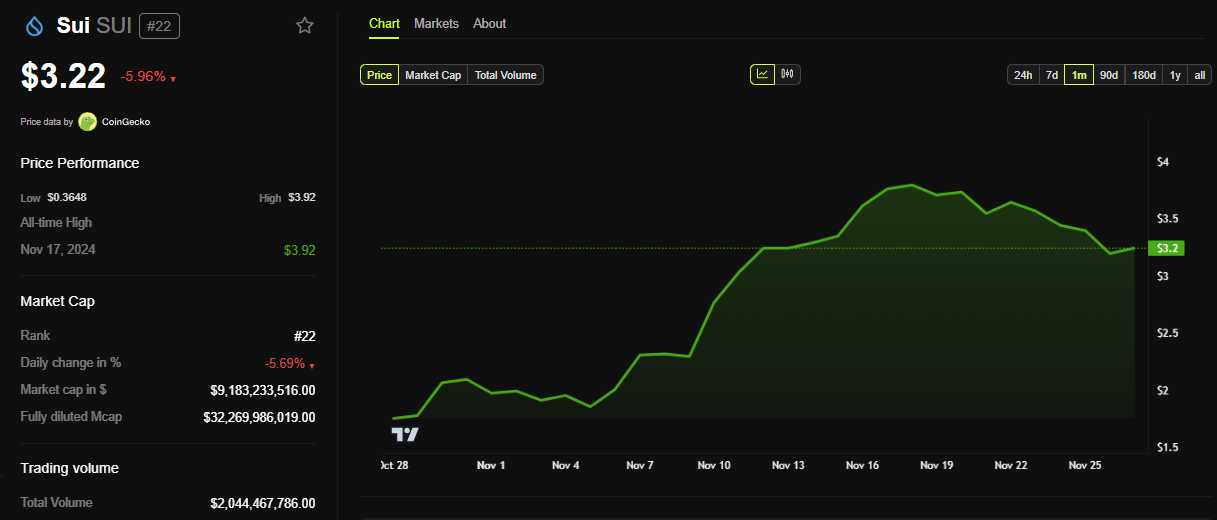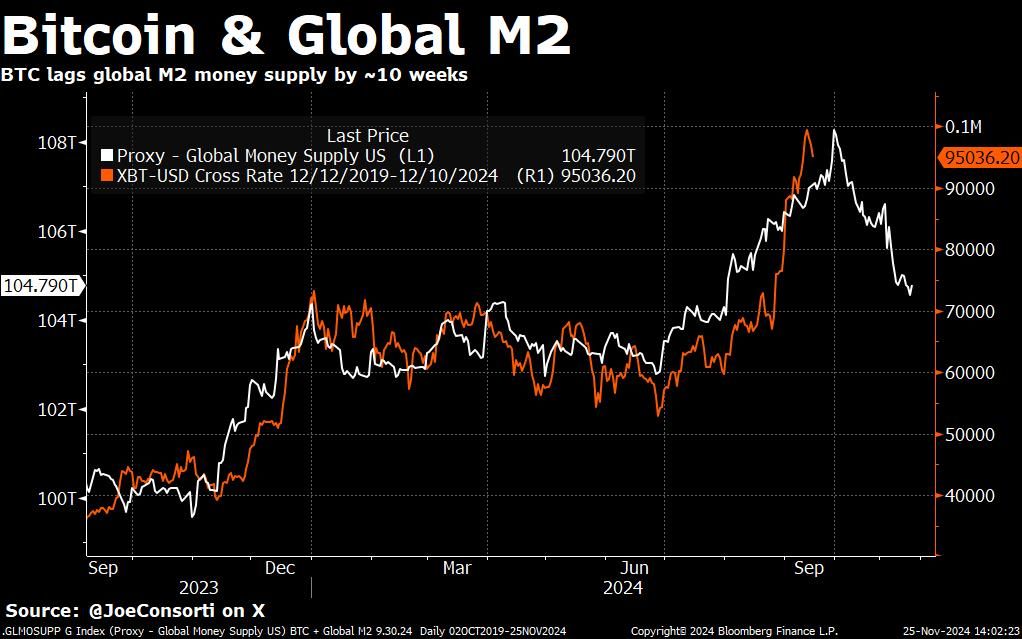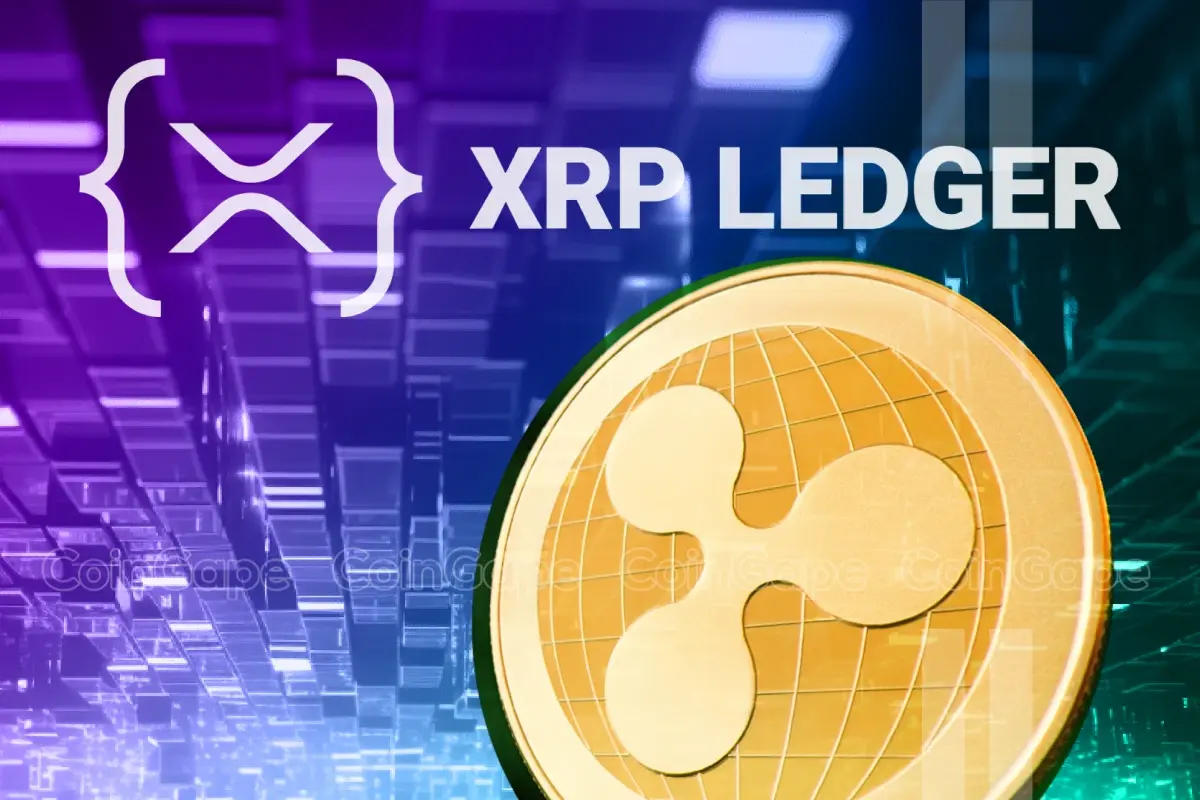Bitcoin
Rumble’s Bitcoin Treasury: A $20 Million Allocation


Rumble, a video-sharing and cloud services platform, is making a big move into crypto with a Bitcoin treasury strategy. The company plans to use its cash reserves to buy Bitcoin as a store of value and a hedge against inflation.
This decision marks a major change for the $2 billion company and shows its dedication to connecting with the crypto and gaming communities.
Rumble Joins Bitcoin Movement with $20 Million Allocation Strategy
Rumble announced that its Board of Directors has approved using up to $20 million of its excess cash reserves to buy Bitcoin. The video-sharing and cloud services platform stated that these purchases will be made at the company’s discretion.
“I wasn’t joking when I said I was going to be laser-focused on the crypto and gaming communities. It’s a new era,” Rumble CEO Chris Pavlovski said.
Companies diversify their corporate treasury with Bitcoin to protect assets from currency devaluation and benefit from its potential long-term value growth. This trend has gained momentum among behemoth firms like MicroStrategy, which made headlines for its aggressive Bitcoin purchases. Rumble appears to be following suit, leveraging Bitcoin as a strategic asset to support its expansion.
Pavlovski elaborated on Rumble’s Bitcoin treasury strategy, pointing out Bitcoin’s resistance to inflationary pressures caused by government monetary policies.
“Unlike any government-issued currency, Bitcoin is not subject to dilution through endless money printing,” he explained.
Rumble’s timing aligns with the broader adoption of Bitcoin, spurred by institutional interest and a crypto-friendly US presidential administration. However, Pavlovski noted that Rumble’s Bitcoin purchases would depend on market conditions, the cryptocurrency’s price, and the company’s financial needs.
Dr. Disrespect’s $20 Million Deal: Opportunity vs. Risk
In a parallel development, Rumble is making waves in the gaming sector by signing an exclusive $20 million deal with controversial streamer Dr. Disrespect. The deal includes his leadership role in Rumble’s gaming division, where he will spearhead the development of the Rumble Gaming Community.
Dr. Disrespect’s presence could be a double-edged sword for Rumble. On the one hand, his millions of followers provide an opportunity to expand the platform’s reach. However, his history of controversies, including a ban from Twitch, has raised questions about his fit for Rumble.
Pavlovski addressed these concerns, stating that Dr. Disrespect has promised to “be on his best behavior moving forward.” If successful, this partnership could establish Rumble as a dominant player in the gaming content space, complementing its crypto-focused initiatives.
“Rumble is in a new era, and I’m laser-focused on expanding into two categories: gaming and crypto,” Pavlovski added.
Rumble’s Bitcoin treasury strategy and its high-profile partnership with Dr. Disrespect reflect a bold vision for the company’s future. These moves could position Rumble as a unique player bridging the worlds of crypto, gaming, and video-sharing.
However, these ambitious strategies are risky. Bitcoin’s price volatility could pose challenges for Rumble’s treasury. Similarly, controversies surrounding Dr. Disrespect could test the platform’s reputation.
If Rumble successfully navigates these hurdles, it could emerge as a trailblazer, similar to MicroStrategy’s transformation through Bitcoin. With a focus on innovation and community building, Rumble’s bets on Bitcoin and gaming might well pay off.
Disclaimer
In adherence to the Trust Project guidelines, BeInCrypto is committed to unbiased, transparent reporting. This news article aims to provide accurate, timely information. However, readers are advised to verify facts independently and consult with a professional before making any decisions based on this content. Please note that our Terms and Conditions, Privacy Policy, and Disclaimers have been updated.
Bitcoin
The Future of Decentralized Lending?

According to the World Bank, 1.4 billion adults around the world remain unbanked. The global financial system, despite its unbelievably vast infrastructure, falls short of serving the global population equitably on many counts.
For many, the glittering promise of financial freedom is not merely a matter of surviving the rat race but also a tale of inflation and documentation.
Bitcoin-Backed Credit: A Lifeline for the Unbanked Globally
Millions of people remain underbanked or entirely unbanked due to strict credit requirements, high fees, and limited accessibility. From Palestinian refugees with no proof of citizenship, single women with no employment contract in Egypt, or the countless people facing exorbitant inflation rates of over 120% in Argentina.
During the 2008 financial crisis, countless individuals in the US lost their homes due to predatory lending practices, showcasing the system’s inherent vulnerabilities. Even today, high inflation erodes savings in fiat currencies, leaving consumers with fewer options to preserve their wealth.
Meanwhile, small businesses worldwide face rejection from banks due to rigid creditworthiness standards. One may even argue that money is perhaps the most violent political tool in the weaponry bag of the powers that be.
This gap in accessibility and fairness reveals the need for alternative financial systems. Bitcoin-backed credit offers a viable solution, overcoming both the political agendas and the economic limitations that keep poor people poor.
What Are Bitcoin-Backed Credit Systems?
Bitcoin-backed credit systems allow borrowers to use their BTC holdings as collateral to secure loans without selling their assets. These systems function similarly to secured loans, where a borrower pledges an asset to access liquidity.
If the borrower fails to repay, the lender liquidates the collateral to recover the funds. Unlike traditional loans, these systems do not require credit scores or extensive documentation, making them more accessible to crypto holders.
“High inflation, currency devaluation, and low trust in centralized banks could drive demand for Bitcoin-backed loans. Bitcoin’s stability and decentralized nature make it attractive in volatile economies, and DeFi platforms offer lower barriers and better terms compared to traditional lending,” Kevin Charles, co-founder of The Open Bitcoin Credit Protocol told BeInCrypto in an interview.
The market for Bitcoin-backed credit has grown, with key players like BlockFi, Ledn, Celsius, and Nexo leading the way. These platforms allow users to retain exposure to BTC while accessing fiat or stablecoin liquidity. The simplicity and appeal of these systems have fueled their adoption in recent years, one reason why they have faired peacefully throughout bear markets.
One major advantage of BTC-backed credit is the ability to retain exposure to Bitcoin’s price appreciation. Borrowers can unlock liquidity without selling their BTC, allowing them to benefit from potential long-term gains.
Additionally, Bitcoin-backed loans act as a hedge against inflation by offering an alternative to the ever-devaluing fiat currencies. A crypto holder in Argentina, for example, would be able to secure themselves against their dwindling national currency and even make extra cash.
According to Bankrate, USD now has an inflation rate of 2.4%, which is notably the lowest it has been since February 2021. Meanwhile, BTC has an inflation rate of just 1.7%.

BTC-backed systems also promote financial accessibility. Unlike traditional banks, which require stringent credit checks, Bitcoin-backed credit platforms primarily assess the value of the collateral. This approach opens the door to individuals in regions with limited banking infrastructure, offering a lifeline to the unbanked.
For those who hold true to the ethos of decentralization, global inclusion is the real selling point. Bitcoin-backed credit has the potential to provide financial services to these populations, bridging the gap left by traditional systems. Central banks and global financial institutions remain privy to the whims and shifts of the ever-changing political playground.
In a nation like Lebanon, whose residents primarily transact in USD due to its effectively dead LBP, citizens were barred from withdrawing their own dollars when the central bank faced a dollar shortage crisis. For reference, one USD equals 89,550 LBP. In neighboring Egypt, rumors of impounded USD accounts also began circulating before being denied by central bank officials.
“Bitcoin-backed credit operates on a global, decentralized network, meaning access is not dependent on income, location, or credit history. By using Bitcoin as collateral, anyone holding the asset can access loans without traditional gatekeepers. Early DeFi platforms show increasing adoption in regions with limited banking access, highlighting the potential for financial inclusion,” Charles added.
However, even with all of these advantages, duality is the law of the universe. Bitcoin-backed credit systems are no cure-all solution; they carry significant risks.
The most glaring is Bitcoin’s price volatility. A sudden drop in BTC’s value can trigger margin calls, forcing borrowers to either add collateral or face liquidation. During the crypto market crash in 2022, countless borrowers lost their collateral as prices plummeted. According to Charles, there are ways to mitigate volatility.
“Volatility is managed through over-collateralization and automated liquidations. By requiring more collateral than the loan value, platforms create a buffer against price drops. Additionally, real-time monitoring ensures loans are adjusted to market conditions, maintaining stability even during price crashes,” Charles added.
The Three-Eyed Trojan Horse: Centralization’s Re-emergence
Even so, Bitcoin-backed credit systems have socio-economic implications that warrant examination. The first is that while these platforms democratize access to credit for crypto holders, they risk creating new financial gatekeepers. Wealthy crypto investors, or “crypto whales,” stand to benefit the most, while average users with limited holdings may find themselves excluded.
Whales, or addresses holding more than 100,000 BTC, hold 21% of the total Bitcoin supply. This dynamic means perpetuating wealth concentration within the crypto space as well. If that does happen, we can wave goodbye to the promise of inclusion.

The second concern is traditional financial institutions. They are increasingly infiltrating the Bitcoin-backed credit market through acquisitions and regulatory influence.
Banks like Goldman Sachs and JPMorgan have begun exploring crypto-backed lending, signaling a convergence of decentralized and traditional finance. In November, Bloomberg reported that Goldman Sachs is preparing to launch a new company focused on digital assets. While these developments bring legitimacy, they also raise concerns about co-opting Bitcoin’s decentralized ethos.
Then enters the third and final Trojan horse: government oversight. It presents both opportunities and challenges for Bitcoin-backed credit systems.
Regulation can legitimize these platforms, ensuring consumer protection and stability. However, excessive regulation could stifle innovation and compromise decentralization.
For example, the European Union’s MiCA framework has introduced clarity but also imposed stringent compliance requirements, causing friction within the crypto industry. Binance, the world’s largest crypto exchange by trading volume, had to disable copy trading services for its European users in June after MiCA was announced.
Another issue that may impact accessibility is know-your-customer (KYC) standards, which may hinder those who rely on crypto wallets because they lack sufficient personal documentation. Policymakers often argue that platforms without strict KYC oversight risk assisting criminals in money laundering operations. In 2023, Turkiye even rolled out a new set of crypto laws aimed at tightening up KYC standards.
“We’re witnessing a re-centralization of a system designed to be free. The challenge is finding balance without diluting Bitcoin’s core principles,” Charles posed.
Platforms like Aave and Sovryn exemplify decentralized approaches to Bitcoin-backed credit. These systems rely on smart contracts to automate transactions, reducing the need for intermediaries and ensuring transparency. However, decentralization comes with its own challenges, including scalability, security vulnerabilities, and regulatory gray areas.
Still, success stories exist. Borrowers have used Bitcoin-backed loans to fund businesses, pay medical bills, or navigate economic uncertainty without selling their BTC. Conversely, others have faced significant losses due to liquidation during market downturns, highlighting the high stakes of these systems.
In conclusion, Bitcoin-backed credit represents both a financial revolution and a cautionary tale. Its future hinges on its ability to scale, remain accessible and adhere to Bitcoin’s ethos of decentralization.
As traditional finance enters the space and regulatory frameworks evolve, the challenge will be maintaining the balance between innovation and inclusivity. Whether these systems democratize finance or merely shift the gatekeeping remains to be seen.
Disclaimer
Following the Trust Project guidelines, this feature article presents opinions and perspectives from industry experts or individuals. BeInCrypto is dedicated to transparent reporting, but the views expressed in this article do not necessarily reflect those of BeInCrypto or its staff. Readers should verify information independently and consult with a professional before making decisions based on this content. Please note that our Terms and Conditions, Privacy Policy, and Disclaimers have been updated.
Bitcoin
Programmable BTC Now a Reality

The Sui Foundation has announced a partnership with Babylon Labs, Lombard Protocol, and Cubist to integrate Bitcoin into the Sui ecosystem.
This collaboration will bring programmable Bitcoin functionality to Sui and leverage its high-performance Layer-1 (L1) blockchain to unlock Bitcoin’s $1.8 trillion liquidity for decentralized finance (DeFi).
Unlocking Bitcoin’s Potential on Sui
This development marks an important moment for both Bitcoin (BTC) holders and the broader blockchain community. Bitcoin’s security and liquidity, combined with Sui’s programmability and composability, could redefine how digital assets interact within decentralized systems.
Starting in December, Bitcoin holders will be able to stake their BTC through the Babylon staking protocol. In return, they will receive LBTC, a liquid staking token that Lombard Protocol natively mints on Sui. LBTC, already a cornerstone of Ethereum’s DeFi ecosystem, has surpassed $1 billion in minted assets. It actively serves in lending, borrowing, and trading applications.
This initiative aims to replicate and scale this success on Sui, where LBTC will become a core asset in its DeFi ecosystem. By staking their BTC, users can unlock its value without sacrificing liquidity or security. This aligns with the growing trend of integrating Bitcoin into programmable ecosystems.
“Bringing BTC into Sui is a match made in heaven. Thanks to this collaboration, users from all blockchain ecosystems can come to Sui to participate in a thriving financial ecosystem in which Bitcoin will play a key role,” Jameel Khalfan, Head of Ecosystem Development at the Sui Foundation, said.
Cubist, a novel infrastructure provider, will ensure seamless integration with a strong framework for deposits, staking, minting, and bridging. Babylon Labs and Lombard have already demonstrated the power of Bitcoin liquidity on Ethereum, and now this success is being extended to Sui. By building programmable Bitcoin use cases, Babylon Labs Co-founder and CTO Fisher Yu emphasized their vision.
“Babylon builds native use cases for BTC to bring Bitcoin security and liquidity to decentralized systems. We are excited to make this a reality on Sui,” Yu remarked.
The integration aligns perfectly with Sui’s mission of enhancing the utility of digital assets. By combining Bitcoin’s unparalleled liquidity with Sui’s programmability, this partnership has the potential to drive adoption. It could attract developers, users, and institutional players to the Sui ecosystem.
The Growing Sui Ecosystem
Sui’s ecosystem is advancing, with key developments bolstering its reputation as a top-tier blockchain. Among them is its recent strategic partnership with Franklin Templeton, a global investment firm. The partnership will explore blockchain-based solutions for financial markets. This collaboration reflects Sui’s commitment to integrating traditional finance (TradFi) with blockchain technology.
Similarly, the network’s novel use cases have since come into the limelight. BeInCrypto reported Chirp launched the first decentralized physical infrastructure (DePIN) game on Sui, reflecting its versatility. This play-to-earn model combines blockchain technology with real-world applications, enhancing user engagement.
Nevertheless, while the Sui Foundation’s achievements are commendable, the road has not been without bumps. Recently, Sui experienced a network outage caused by a bug that temporarily disrupted operations.
The foundation acted swiftly to resolve the issue, demonstrating its commitment to reliability and transparency. However, this incident serves as a reminder that even leading blockchain platforms must continually prioritize robustness and scalability.
As Sui taps into Bitcoin’s vast liquidity, its ecosystem is poised for exponential growth. The collaboration with Babylon Labs, Lombard, and Cubist enhances Sui’s DeFi offerings while setting a benchmark for interoperability and innovation across blockchain platforms.

Despite news of this integration, Sui’s powering token, SUI, has been down almost 6% since the Tuesday session opened. BeInCrypto data shows SUI is trading for $3.22 as of this writing.
Disclaimer
In adherence to the Trust Project guidelines, BeInCrypto is committed to unbiased, transparent reporting. This news article aims to provide accurate, timely information. However, readers are advised to verify facts independently and consult with a professional before making any decisions based on this content. Please note that our Terms and Conditions, Privacy Policy, and Disclaimers have been updated.
Bitcoin
Bitcoin Faces 25% Correction Risk Amid Global Liquidity Tightening

Bitcoin (BTC) price action continues to come under focus as analysts consider its correlation with the global M2 money supply.
A notable projection suggests the pioneer cryptocurrency may be at the cusp of a 20–25% correction, aligning with a recent contraction in M2 liquidity.
Why Bitcoin May Be Due for a 25% Correction
Bitcoin custody firm Theya’s head of growth, Joe Consorti, has highlighted Bitcoin’s close tracking of the global M2 with an approximately 70-day lag since September 2023. In a recent post on X (formerly Twitter), Consorti warned of a potential BTC pullback by 25% as it continues to track the global M2,
“I don’t want to alarm anyone, but if this trend continues, Bitcoin could experience a 20-25% correction,” Consorti said.
His analysis sets M2 data 70 days forward compared to Bitcoin’s price, revealing a worrying trajectory as global liquidity tightens. Consorti’s observations come amid a rare dislocation from the M2 trend, which historically aligns with Bitcoin prices.

He attributes past divergences, such as during the 2022 FTX collapse, to market-specific events. In hindsight, on September 30, Consorti predicted Bitcoin could hit $90,000 by year-end if it continued mirroring M2 trends. That forecast played out accurately during BTC’s recent rally, bolstering his credibility.
Another proponent of this correlation, user Joseph Scioscia, reiterated that Bitcoin acts as a reliable proxy for M2 money supply trends. He advised investors to adopt a long-term dollar-cost-averaging (DCA) strategy, citing BTC’s historical resilience.
“Bitcoin is the best proxy for M2 money supply. The trend in M2 reveals the potential direction in BTC, especially with Bitcoin’s approximate 70-day lag behind M2. DCA in Bitcoin and adopt a long-term strategy,” Scioscia stated.
However, skepticism remains. An X user known as Spicez criticized the focus on short-term data. They argue that a broader five-year chart would offer more insight into Bitcoin’s behavior during election cycles and post-halving periods.
“It would be nice to see this chart for the last 5 years. It would give us an indication of BTC’s behavior towards M2 during the election cycle and how it behaved after the last halving. This 2-year chart doesn’t tell us much at all,” Spicez challenged.
Crucial Link Between M2 Money Supply and BTC
The global M2 supply measures the total liquidity in the economy, including checking accounts, savings accounts, and other liquid assets that can be quickly converted into cash. It has been a key driver for Bitcoin’s price movements.
Risk assets, including Bitcoin, typically correlate with rising liquidity. The relationship between Bitcoin’s price and M2 expansion reflects broader market sentiment and economic conditions.
A higher M2 expansion indicates a loose monetary policy and an increased money supply, which often boosts risk assets like cryptocurrencies. Historically, increases in M2 correspond with bullish trends for Bitcoin as liquidity flows into risk assets. Conversely, declines often signal impending corrections.
In a recent analysis, BeInCrypto echoed this link, suggesting that global liquidity could help Bitcoin reach $100,000. As reported, factors like the 2024 Bitcoin halving and broader macroeconomic recoveries often act as tailwinds for BTC’s price.
The rising interest in Bitcoin ETFs (exchange-traded funds), particularly from institutions like BlackRock, could counteract M2-related pressures. Structural buying from ETFs, coupled with corporate acquisitions, may provide a cushion against liquidity-driven sell-offs.
“It [Bitcoin] could buck this 2-month bout of M2 deflation thanks to structural ETF inflows + corporate buying pressure,” Consorti added.
While Bitcoin’s price faces potential headwinds from shrinking global liquidity, the market remains divided on its next move. Structural inflows and long-term adoption strategies may temper any downside. However, traders should brace for volatility as macroeconomic factors play out this week.

At the time of writing, Bitcoin is trading at $94,395. BeInCrypto data shows it has been down 3.37% since the Tuesday session opened.
Disclaimer
In adherence to the Trust Project guidelines, BeInCrypto is committed to unbiased, transparent reporting. This news article aims to provide accurate, timely information. However, readers are advised to verify facts independently and consult with a professional before making any decisions based on this content. Please note that our Terms and Conditions, Privacy Policy, and Disclaimers have been updated.
-

 Altcoin23 hours ago
Altcoin23 hours agoDogecoin Price To $1.2 In 10-15 Days? What The Bull Pennant Says
-

 Market23 hours ago
Market23 hours agoToday’s Trending Altcoins — November 25: GIGA, LKY, MAD
-

 Market22 hours ago
Market22 hours agoWhy the XLM Price Rally May Reach the $0.91 All-Time High
-

 Altcoin22 hours ago
Altcoin22 hours agoRipple Announces First Tokenized Money Market Fund on XRP Ledger
-

 Altcoin9 hours ago
Altcoin9 hours agoBTC Dips Below $95K, LDO Up 15%
-

 Altcoin19 hours ago
Altcoin19 hours agoDogecoin Vs. PEPE: Analyst Reveals Which Coin You Should Hold This Bull Cycle
-

 Market18 hours ago
Market18 hours agoCardano (ADA) Price Faces Critical Levels After 193% Surge
-

 Altcoin18 hours ago
Altcoin18 hours agoWhy Is XRP Price Up Today, $5 Possible By December?
























